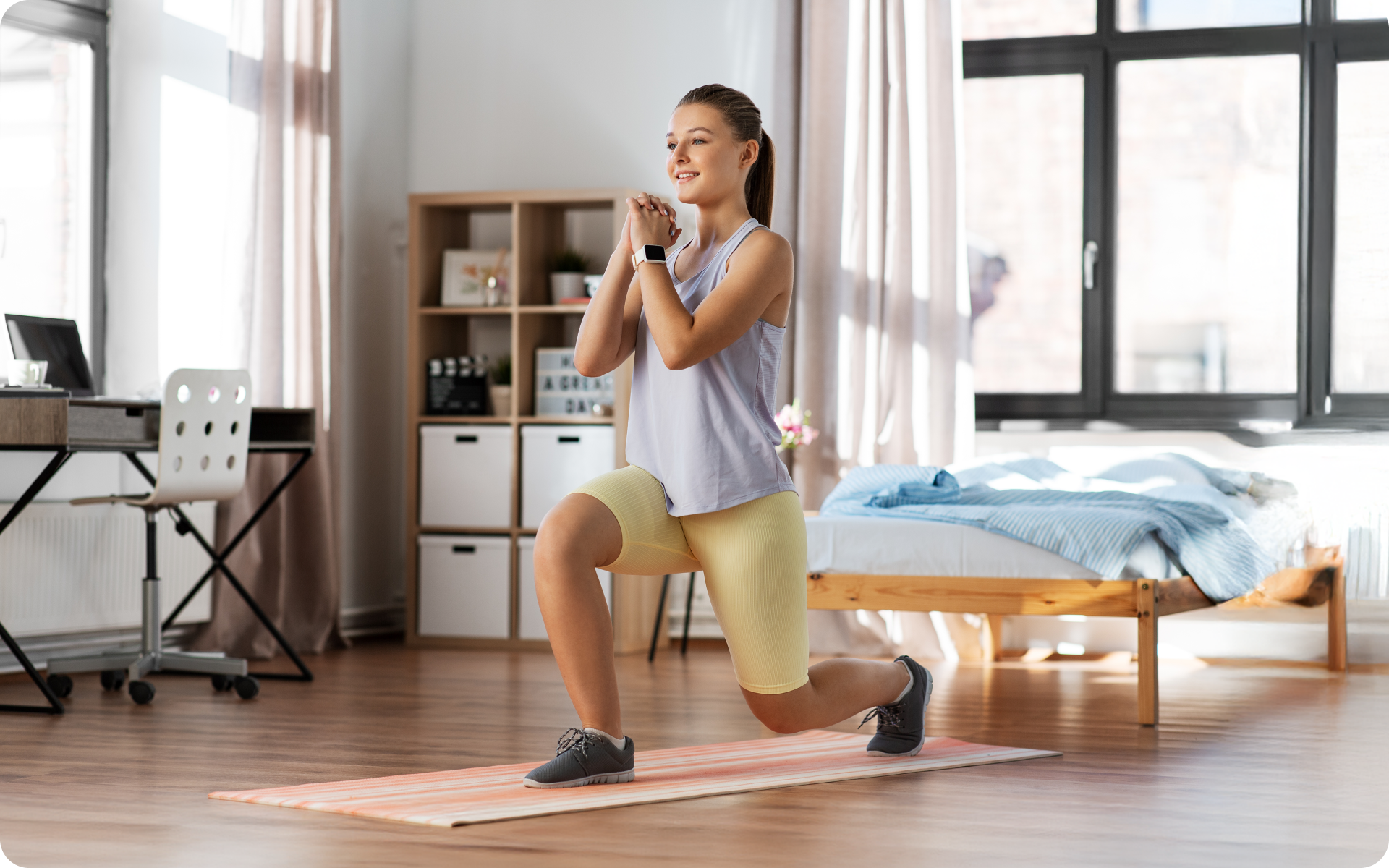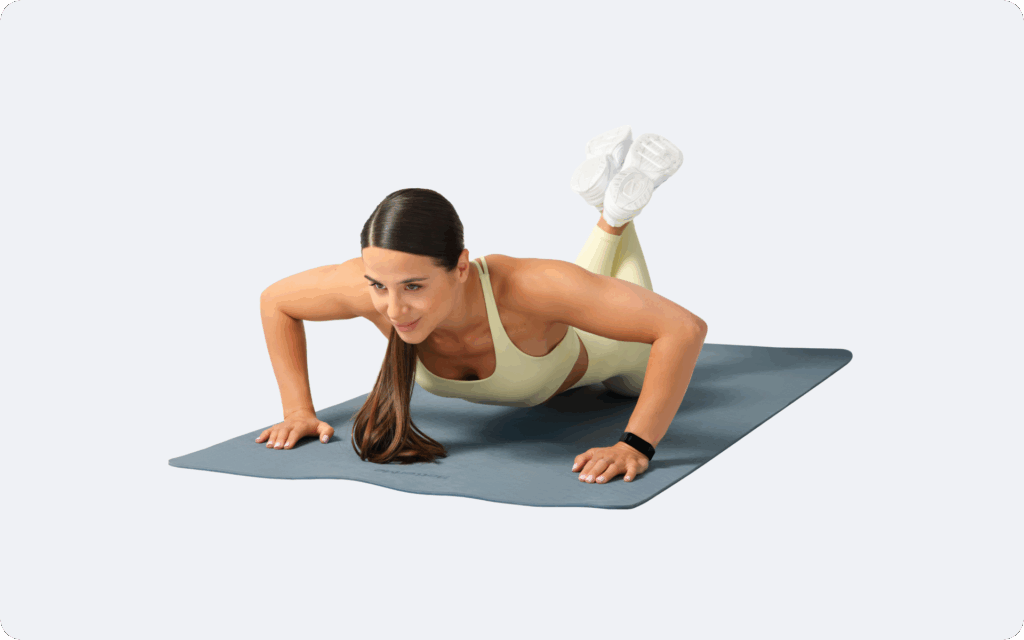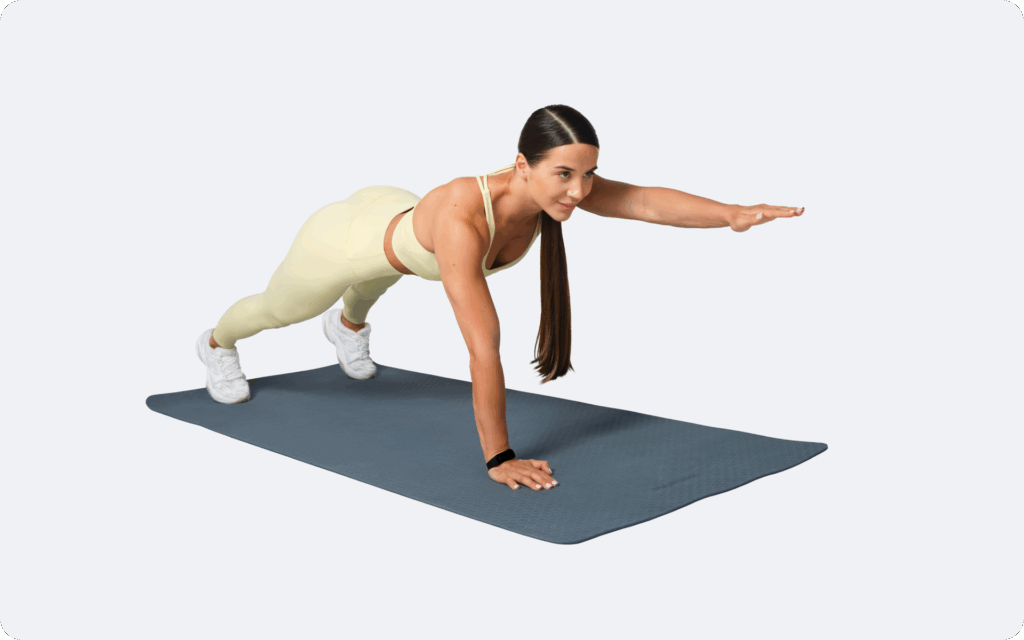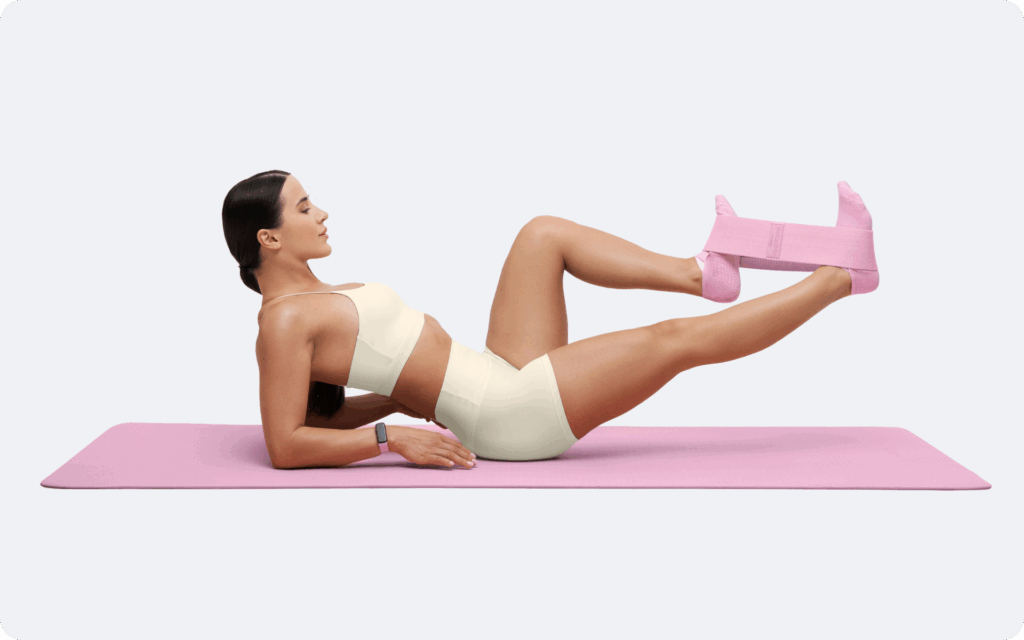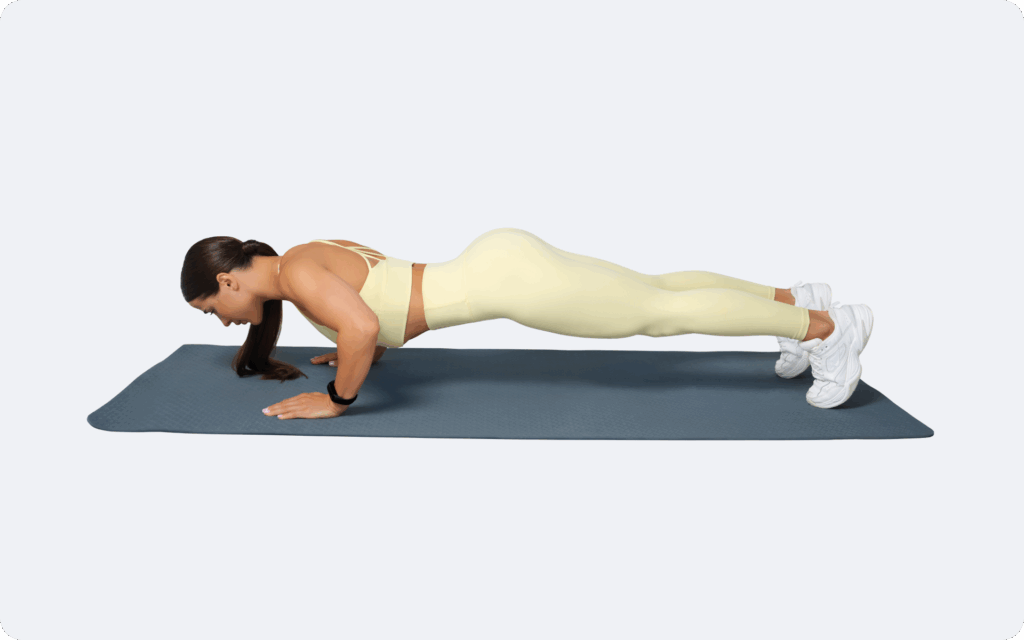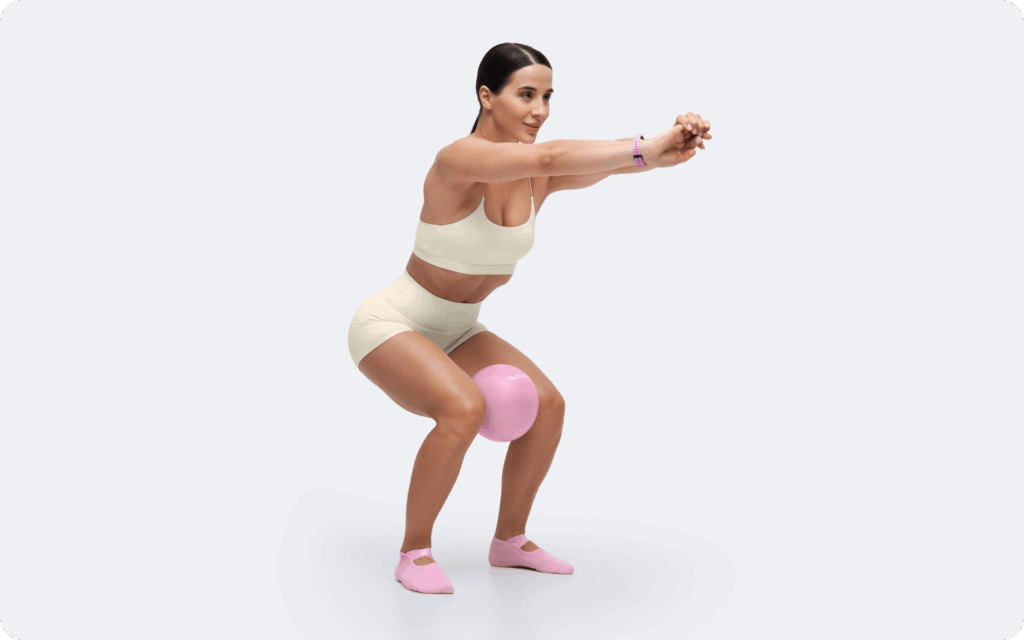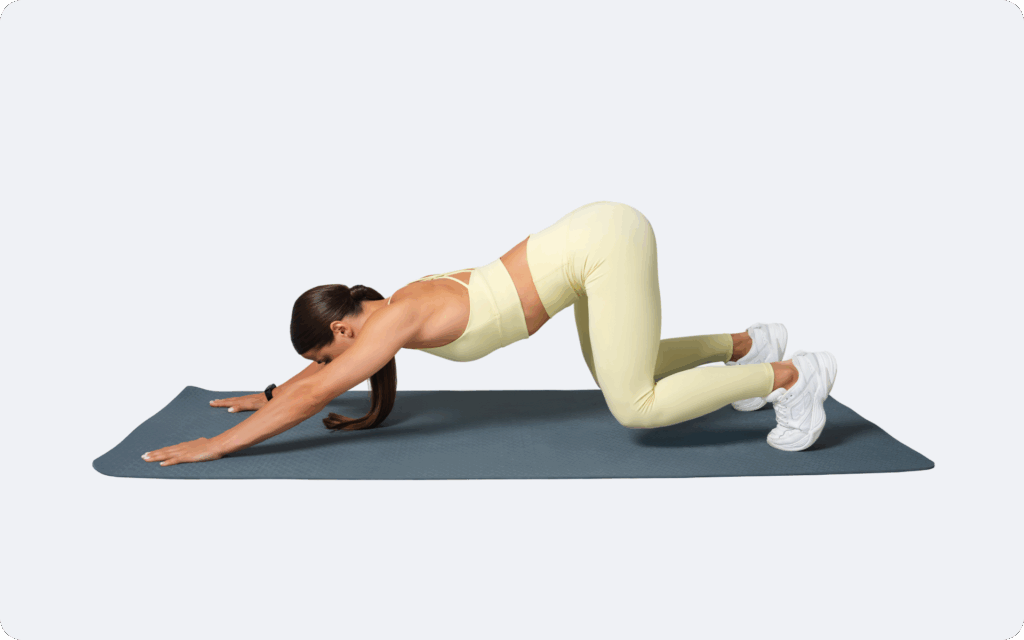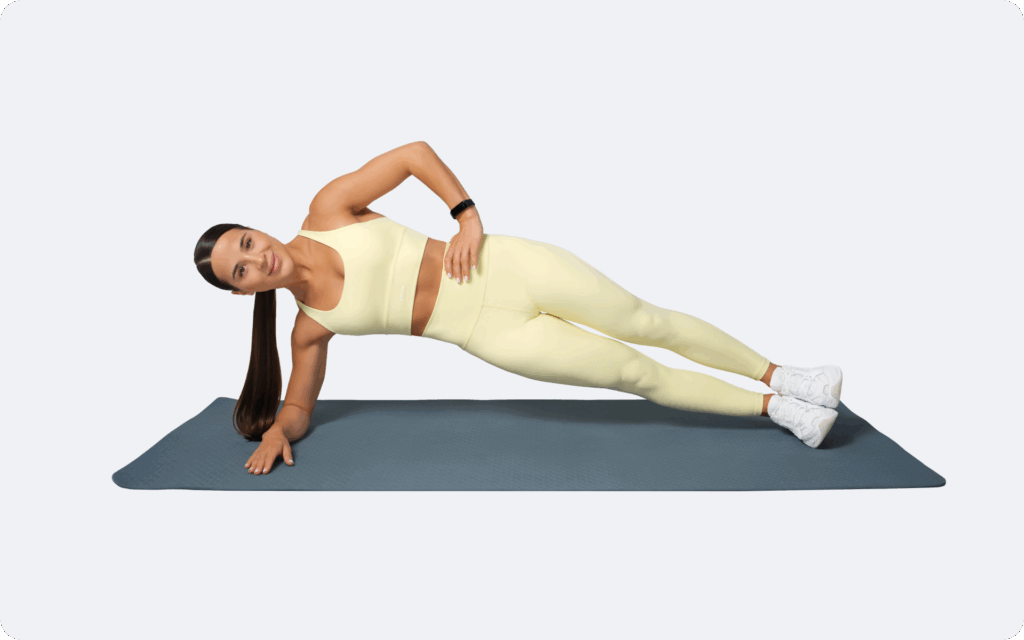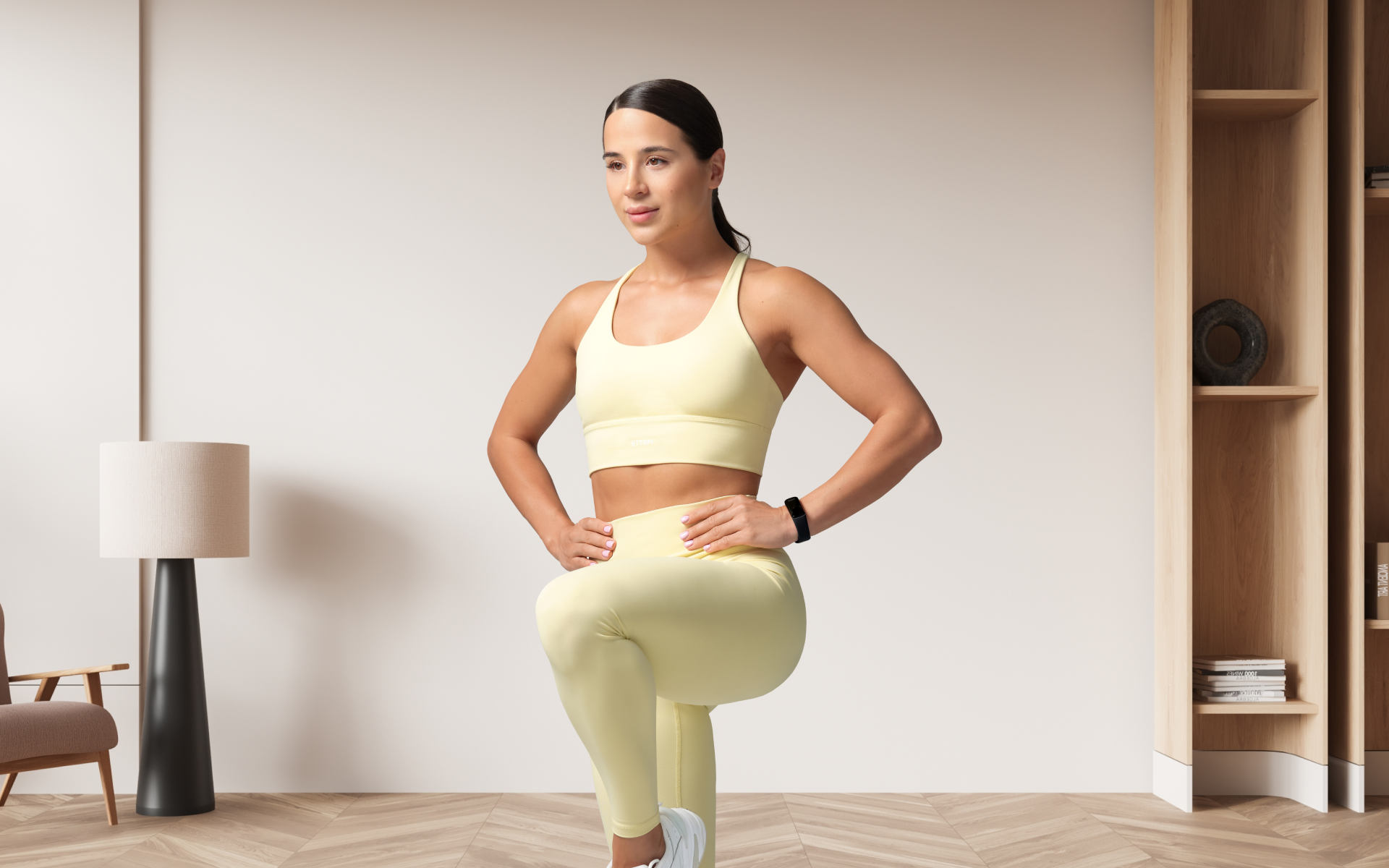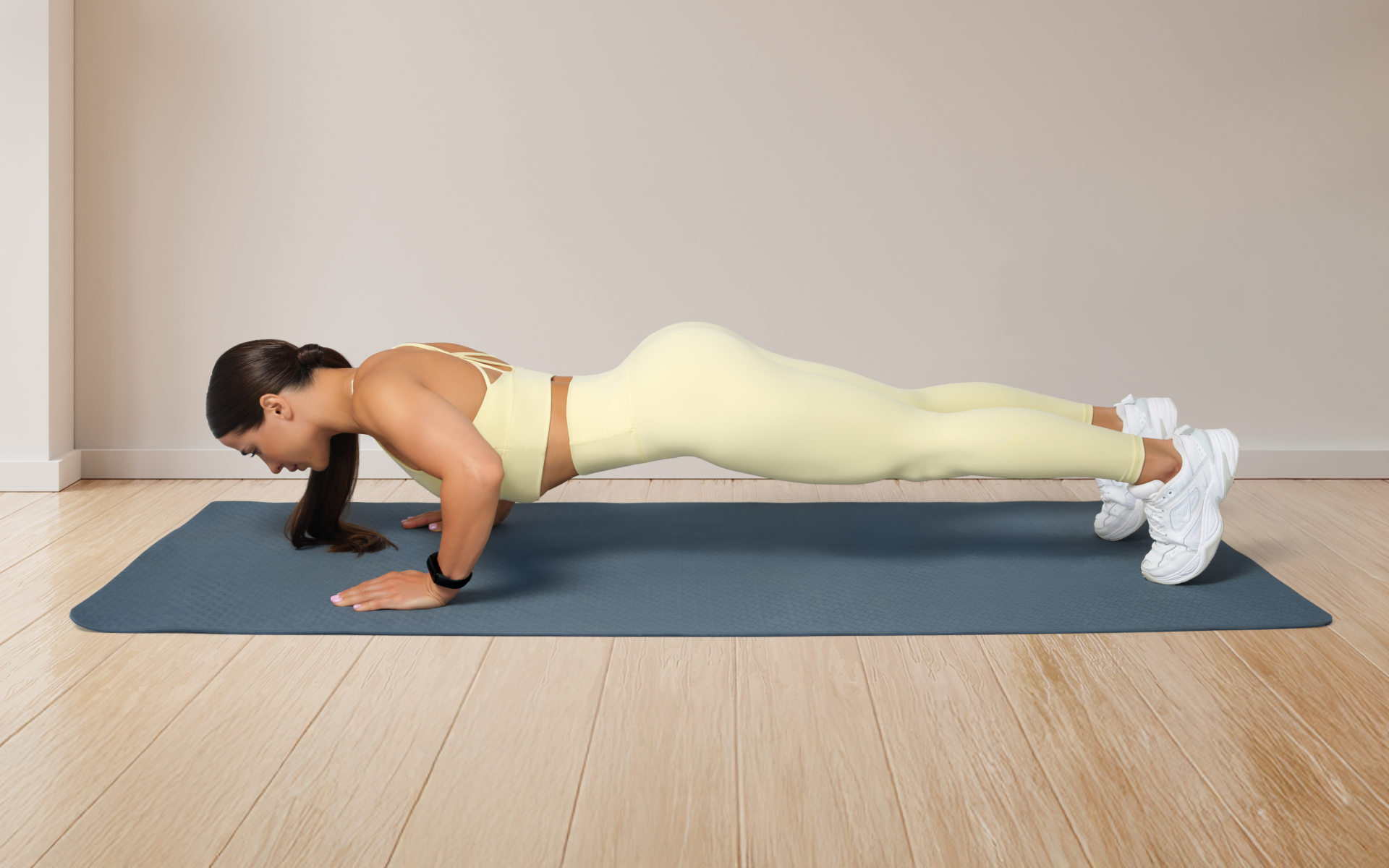A well-designed calisthenics workout plan serves as your roadmap to success. It provides progressive overload, ensures balanced muscle development, and prevents the plateaus that derail many fitness journeys. Without structure, you’re essentially throwing darts in the dark – you may hit the target occasionally, but consistency becomes impossible.
This guide breaks down the essential components of a good calisthenics workout plan. We explore how to structure your training for maximum muscle growth, whether equipment is necessary, optimal training splits, and proven progression strategies. By the end, you’ll have the blueprint to create a plan that transforms your physique and builds functional strength that transfers to every area of life.
Is Calisthenics Good for Shredding?
Yes, calisthenics is good for body recomposition – building muscle while losing fat simultaneously (1). The key lies in understanding how bodyweight training creates the metabolic and muscular adaptations necessary for a lean, defined physique.
Calisthenics helps with fat loss through several mechanisms. High-rep bodyweight circuits elevate your heart rate significantly, which creates substantial caloric expenditure during and after exercise (2).
A review published in ACSM’s Health & Fitness Journal found that circuit-based bodyweight training increases calorie burn and promotes weight loss (3).
The muscle-building potential of calisthenics is equally impressive. Research from the American Council on Exercise has demonstrated that progressive bodyweight exercises can stimulate muscle growth as effectively as traditional weight training when volume and intensity are properly managed (4). For example, pull-ups activate the latissimus dorsi, rhomboids, and biceps with similar EMG readings to weighted alternatives (5).
The real advantage lies in the compound nature of most calisthenics movements. A single push-up variation simultaneously engages the chest, shoulders, triceps, and core while challenging your proprioception and stability (6). This multi-muscle activation creates a high metabolic cost per exercise, which makes your training time more efficient for body composition goals (7).
Furthermore, the isometric components inherent in many calisthenics exercises – holding the top of a pull-up or bottom of a squat – increase time under tension, an essential variable for muscle hypertrophy (8). This extended muscle tension, combined with the stabilization requirements of bodyweight movements, creates the perfect environment for building muscle.
Pairing your calisthenics practice with a well-rounded nutrition plan can also yield significant results in body composition. By focusing on whole, nutrient-dense foods and adequate protein intake, you provide your body with the fuel it needs to build and maintain muscle mass while minimizing excess body fat.
Read more: Is a Calisthenics Everyday Split the Best Way to Build Muscle?
What Should a Good Calisthenics Workout Plan Include?
An effective calisthenics program must address several fundamental principles to ensure continuous progress and balanced development.
- Progressive Overload System
Your program must include a clear method for increasing difficulty over time (9).
Unlike traditional weight training where you simply add plates, calisthenics progression requires creativity and planning (10). This may involve transitioning from knee push-ups to regular push-ups to archer push-ups, or progressing from assisted squats to pistol squats. Each exercise should have a clear advancement pathway mapped out for at least six months of training.
- Balanced Movement Patterns
A comprehensive plan addresses all primary movement patterns: pushing, pulling, squatting, hinging at the hips, and carrying loads. This ensures balanced muscle development and reduces injury risk. Many beginners focus heavily on push-ups but neglect pulling movements, which creates muscular imbalances that can lead to shoulder problems and postural issues.
Whether you’re a workout beast or just a beginner making your first foray into the world of fitness and dieting – BetterMe has a lot to offer to both newbies and experts! Install the app and experience the versatility first-hand!
- Appropriate Volume and Frequency
Research has suggested that muscle groups should be trained 2-3 times per week for optimal growth (11). Your calisthenics plan should distribute this volume intelligently across the week. This may mean performing upper-body exercises on Monday, Wednesday, and Friday while incorporating lower-body and core work on Tuesday, Thursday, and Saturday.
- Flexibility and Mobility Components
Calisthenics demands significant mobility, particularly for advanced movements such as deep squats or overhead positions. Your program should include dedicated mobility work and dynamic warm-ups. This isn’t optional, it’s essential for progression and injury prevention.
- Clear Periodization Strategy
Your plan should cycle between phases of different intensities and focuses. Perhaps 4-6 weeks emphasizing strength development followed by 2-3 weeks of higher volume endurance work. This prevents adaptation plateaus and keeps your body responding to the training stimulus (12).
- Recovery Protocols
Built-in rest days and deload weeks prevent overtraining and allow your nervous system to adapt to new movement patterns (13, 14). Recovery isn’t passive – it should include active recovery activities such as light walking or gentle stretching.
Can a Good Calisthenics Workout Plan Work without Equipment?
Absolutely, but equipment can significantly expand your exercise arsenal and progression options.
A bodyweight-only approach can take you surprisingly far. You can build impressive strength and muscle using just your body across fundamental movements: push-ups, squats, lunges, planks, burpees, and jumping exercises (15). These movements provide enough stimulus for beginners and intermediates to see substantial progress for 6-12 months of consistent training.
However, certain movement patterns become challenging to load effectively without equipment. Pulling movements, in particular, present the biggest limitation. While you can perform inverted rows using a table or perform door frame pull-ups (carefully), these solutions are often unstable and limit progression potential.
A minimal equipment approach opens up significantly more possibilities. A pull-up bar immediately solves the pulling movement limitation and enables progression from assisted pull-ups to weighted variations. Resistance bands add variable resistance and enable exercises that target muscles difficult to work with pure bodyweight movements, such as lateral deltoid raises or posterior deltoid exercises.
Gymnastic rings represent perhaps the most versatile piece of calisthenics equipment. They enable ring push-ups, dips, rows, muscle-ups, and countless other movements while adding instability that challenges your stabilizer muscles. The adjustable height allows for easy progression and regression of exercises.
If your space and budget are extremely limited, prioritize a pull-up bar first, followed by resistance bands, then rings. This combination provides enough exercise variety to support years of progression while maintaining the convenience and accessibility that make calisthenics appealing.
For those interested in exploring equipment-free options further, check out our guide on calisthenics workout no equipment for comprehensive bodyweight-only routines.
Read more: Calisthenics Squat Progression Guide to Inch Closer to Your Fitness Goals
What’s the Ideal Split in a Calisthenics Workout Plan?
The optimal training split depends on your experience level, recovery capacity, and specific goals.
- Experience level – For beginners, a full-body workout routine 2-3 times per week is recommended to build a strong foundation and allow for proper recovery. As you become more experienced and stronger, you can increase the frequency or number of exercises per muscle group.
- Recovery capacity – It’s essential to listen to your body and give it enough rest between workouts. If you feel fatigued or sore, take an extra day off or reduce the intensity of your session. On average, most people need at least 48 hours of rest before working the same muscle group again.
- Specific goals – Depending on what you want to achieve (e.g. skill development, hypertrophy, strength), your workout routine may vary. For example, you may dedicate a full workout skill development where you practice specific movements and techniques
Here are proven approaches for different situations.
Full-Body Split (3 Days a Week)
A good calisthenics workout plan for beginners or those with limited training time. Each session includes upper-body pushing, pulling, and lower-body movements.
Sample Full-Body Split:
- Day 1: Push-ups, inverted rows, squats, plank
- Day 2: Rest or light activity
- Day 3: Pike push-ups, pull-ups, lunges, side plank
- Day 4: Rest
- Day 5: Diamond push-ups, chin-ups, single-leg squats, mountain climbers
- Days 6-7: Rest
Upper/Lower Split (4 Days a Week)
Perfect for intermediates who can handle more volume and want to focus intensely on specific muscle groups. Beginners who have mastered the fundamentals can also use this split.
Sample Upper/Lower Split:
- Day 1: Upper body (push-ups, dips, pull-ups, pike push-ups)
- Day 2: Lower body (squats, lunges, calf raises, glute bridges)
- Day 3: Rest
- Day 4: Upper body (archer push-ups, chin-ups, handstand progression)
- Day 5: Lower body (pistol squat progression, jump squats, single-leg deadlifts)
- Days 6-7: Rest
Push/Pull/Legs/Skillwork/Full-Body Split (5 Days a Week)
Advanced practitioners who can recover from higher training frequencies will benefit from this approach.
Sample Push/Pull/Legs Split:
- Day 1: Push (push-ups, dips, pike push-ups, handstand progression)
- Day 2: Pull (pull-ups, chin-ups, inverted rows, face pulls with bands)
- Day 3: Legs (squats, lunges, calf raises, glute bridges)
- Day 4: Rest
- Day 5: Skillwork
- Day 6: Full body (diamond push-ups, chin-ups, single-leg squats, mountain climbers)
- Day 7: Rest
The key is to match the split to your recovery ability. If you’re consistently fatigued or performance is declining, reduce frequency or volume. Your body’s response should guide your decision more than any predetermined template.
To learn more about structuring your training effectively, explore our comprehensive guide on calisthenics workout split.
How to Progress Exercises in a Calisthenics Workout Plan
Progression in calisthenics requires the systematic manipulation of leverage, range of motion, tempo, and volume (10). Here are the most effective progression strategies.
- Leverage Manipulation
Changing your body position alters the difficulty of exercises dramatically (16). For push-ups, progress from incline (hands on elevated surface) to regular to decline (feet elevated) to archer push-ups to one-arm push-ups. Each variation shifts more load to the working muscles while maintaining the same basic movement pattern.
- Range of Motion Progression
Increasing the range of motion will intensify any exercise. Deep push-ups using parallettes or rings challenge your muscles through a greater stretch, which promotes flexibility and strength simultaneously. This approach works particularly well for squats, where progressing to full range pistol squats requires exceptional mobility and strength.
Reasons why BetterMe is a safe bet: a wide range of calorie-blasting workouts, finger-licking recipes, 24/7 support, challenges that’ll keep you on your best game, and that just scratches the surface! Start using our app and watch the magic happen.
- Tempo Manipulation
Controlling the speed of movement increases time under tension and difficulty. Using a slower tempo paired with increased time under tension has been shown to increase muscle gains significantly (17).
A 5-second negative (eccentric) phase on pull-ups builds tremendous strength and muscle mass. Paused reps – holding positions for 2-3 seconds – add complexity without requiring new equipment or skills.
- Isometric Holds
Static holds build strength in specific joint angles and result in less fatigue (18). Progress from 10-second planks to 60+ second holds, or work toward advanced holds such as the front lever or human flag. These exercises build strength that transfers to dynamic movements.
- Volume and Density Progression
Increasing reps, sets, or decreasing rest periods between sets provides overload. However, this approach has limits – performing 100 push-ups develops endurance more than strength. Use volume progression primarily in the early stages before you transition to more challenging variations.
- Skill-Based Progressions
Advanced calisthenics involves learning complex skills such as muscle-ups, handstands, or human flags. These require dedicated practice sessions focusing on technique development rather than just strength building. Break complex movements into component parts and practice each element separately before you combine them.
The most effective approach combines multiple progression methods. You may increase the reps for 2-3 weeks, then switch to a more challenging variation while dropping back to lower reps. This wave-loading approach prevents plateaus while building both strength and endurance.
For detailed workout structures incorporating these progression principles, read our calisthenics workout routine article.
20 minutes can be sufficient for maintaining fitness or for beginners who are starting their journey, but it will depend on intensity and consistency. High-intensity circuit training can provide meaningful benefits in this timeframe. However, for significant muscle growth or strength gains, most people benefit from 30-45 minute sessions that allow adequate volume and proper warm-up and cool-down periods. Daily calisthenics can work if you vary the intensity and muscle groups that are targeted. Light movement, mobility work, or low-intensity exercises can be performed daily. However, high-intensity strength training should include rest days for muscle recovery. You should consider alternating between intense training days and active recovery days with gentle movement or stretching. Initial strength gains typically appear within 2-4 weeks as your nervous system adapts to new movement patterns. Visible muscle changes usually become apparent after 6-8 weeks of consistent training. Significant physique transformations require 3-6 months of dedicated practice, with the timeline varying based on starting fitness level, consistency, and nutrition quality. Calisthenics can contribute to overall fat loss, including belly fat, when combined with proper nutrition (19 , 20). Bodyweight training helps reduce fat mass and build muscle, both of which are important for body composition improvement (21). However, spot reduction isn’t possible regardless of the style of exercise that you choose – fat loss occurs systemically throughout the body based primarily on your caloric balance and genetics (22 , 23).Frequently Asked Questions
Is 20 minutes of calisthenics enough?
Is it okay to do calisthenics every day?
How long does calisthenics take to see results?
Does calisthenics reduce belly fat?
The Bottom Line
Creating an effective calisthenics workout plan requires more than just stringing together bodyweight exercises. The principles outlined here – progressive overload, balanced movement patterns, appropriate recovery, and systematic progression – form the foundation of any successful program.
Remember that the best plan is one you can execute consistently. Start with movements that challenge you without overwhelming your recovery capacity. Focus on mastering basic patterns before you advance to complex skills. Most importantly, listen to your body’s feedback and adjust accordingly.
DISCLAIMER:
This article is intended for general informational purposes only and does not serve to address individual circumstances. It is not a substitute for professional advice or help and should not be relied on for making any kind of decision-making. Any action taken as a direct or indirect result of the information in this article is entirely at your own risk and is your sole responsibility.
BetterMe, its content staff, and its medical advisors accept no responsibility for inaccuracies, errors, misstatements, inconsistencies, or omissions and specifically disclaim any liability, loss or risk, personal, professional or otherwise, which may be incurred as a consequence, directly or indirectly, of the use and/or application of any content.
You should always seek the advice of your physician or other qualified health provider with any questions you may have regarding a medical condition or your specific situation. Never disregard professional medical advice or delay seeking it because of BetterMe content. If you suspect or think you may have a medical emergency, call your doctor.
SOURCES:
- Body Recomposition: would it be possible to induce fat loss and muscle hypertrophy at the same time? (2022, researchgate.net)
- Effects of Resistance Circuit-Based Training on Body Composition, Strength and Cardiorespiratory Fitness: A Systematic Review and Meta-Analysis (2021, pmc.ncbi.nlm.nih.gov)
- HIGH-INTENSITY CIRCUIT TRAINING USING BODY WEIGHT (2013, journals.lww.com)
- The ACE Body Weight Workout Builder (2024, acefitness.org)
- Electromyographical Comparison of a Traditional, Suspension Device, and Towel Pull-Up (2017, pmc.ncbi.nlm.nih.gov)
- Benefits of Bodyweight Training (2025, humankinetics.me)
- Resistance Training with Single vs. Multi-joint Exercises at Equal Total Load Volume: Effects on Body Composition, Cardiorespiratory Fitness, and Muscle Strength (2017, frontiersin.org)
- The mechanisms of muscle hypertrophy and their application to resistance training (2010, journals.lww.com)
- Complexity: A Novel Load Progression Strategy in Strength Training (2019, frontiersin.org)
- Bodyweight Training: A Return To Basics : Strength & Conditioning Journal (2010, journals.lww.com)
- Progression Models in Resistance Training for Healthy Adults (2009, journals.lww.com)
- CURRENT CONCEPTS IN PERIODIZATION OF STRENGTH AND CONDITIONING FOR THE SPORTS PHYSICAL THERAPIST (2015, pmc.ncbi.nlm.nih.gov)
- Deloading Practices in Strength and Physique Sports: A Cross-sectional Survey (2024, sportsmedicine-open.springeropen.com)
- Why Rest Days Are Important for Muscle Building (n.d., blog.nasm.org)
- Bodyweight Training for Muscular Strength & Endurance (2022, researchgate.net)
- Exercise progression and regression (n.d., us.humankinetics.com)
- The Influence of Movement Tempo During Resistance Training on Muscular Strength and Hypertrophy Responses: A Review (2021, link.springer.com)
- Brief Review: Effects of Isometric Strength Training on Strength and Dynamic Performance (2019, researchgate.net)
- Effect of Calisthenic Exercises in a Sedentary Young Female on Abdominal Obesity, Body Composition, Core Strength, and Physical Activity Level: A Case Report (2025, journals.lww.com)
- Combined diet and physical activity is better than diet or physical activity alone at improving health outcomes for patients in New Zealand’s primary care intervention (2018, bmcpublichealth.biomedcentral.com)
- The effects of a calisthenics training intervention on posture, strength and body composition (2017, researchgate.net)
- Effect of abdominal resistance exercise on abdominal subcutaneous fat of obese women: a randomized controlled trial using ultrasound imaging assessments (2015, pubmed.ncbi.nlm.nih.gov)
- A proposed model to test the hypothesis of exercise-induced localized fat reduction (spot reduction), including a systematic review with meta-analysis (2022, hummov.awf.wroc.pl)
